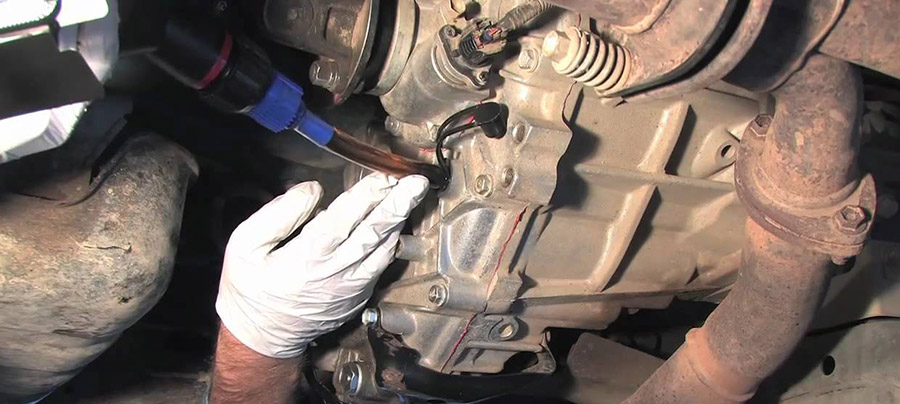
Imagine that you’re driving down the narrow, winding Arroyo Seco at 50mph on your way to work in rush hour traffic, when all of a sudden, your vehicle’s wheels lock up and you start sliding across lanes, with almost no control of your vehicle. At best, a harrowing experience and hefty repair bill, plus a call to your boss to explain why you’ll be late, and at worst, you cause a multi-vehicle collision, people get hurt, maybe somebody dies, and you cause a few hundred people to be late to work as well. This can all happen if your transfer case fails while you are driving.
A transfer case is a special gear box found in cars that send power to more than one drive axle – usually four-wheel-drive and all-wheel-drive vehicles. It essentially does the same job as a transmission – transferring power from the engine to the wheels – except, while transmissions only power one drive axle, a transfer case powers two or more drive axles. In all-wheel-drive vehicles, the transfer case also helps in shifting power between axles depending on road conditions and which axle needs more traction.
The transfer case is filled with lubricating fluid, which helps keep the gears inside cool and reduce friction so that they turn smoothly. This lubricant should be replaced at regular intervals in order to prevent accelerated wear and damage to the gears that can be caused by contaminated or old, degraded lubricant. Your vehicle owner’s manual should have a service interval for transfer case fluid replacement, but in any vehicle, it should be done at least once every 30,000 miles. Transfer case & fluid inspection should also be performed during regular vehicle inspections. If the fluid is ever low, the entire transfer case should then be inspected for leaks.
If your transfer case fluid is dirty, it should be replaced. But if you haven’t had it inspected in a while, there are some other warning signs that can give you a heads up before it fails. A transfer case low on fluid or with dirty fluid can cause abnormal grinding or whining sounds from under your vehicle, from the gears inside of the transfer case grinding together without proper lubrication. Your vehicle also may not shift gears as smoothly, and may get stuck in two-wheel drive, or jump out of four-wheel drive without warning. If you notice any of these symptoms, you should bring your vehicle in to your Certified Auto Repair Specialist of Pasadena as soon as possible. A failing transfer case may seize completely, locking up all of your vehicle’s wheels while you are driving, resulting in a big possibility of a situation that could get very bad, very fast, as described in the introduction.
If you need your transfer case fluid refilled, or suspect that there may be any sort of problem with your transfer case, call your Certified Auto Repair Specialist today at (626) 793-2220. We are Pasadena’s favorite vehicle repair and service center.

